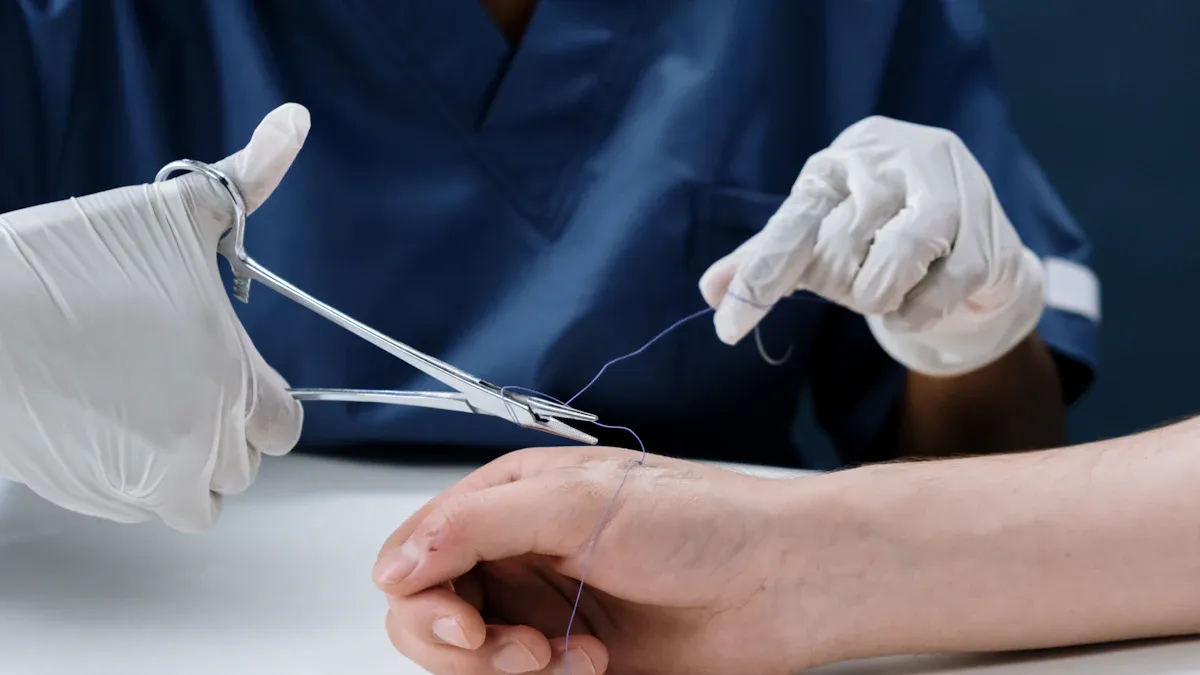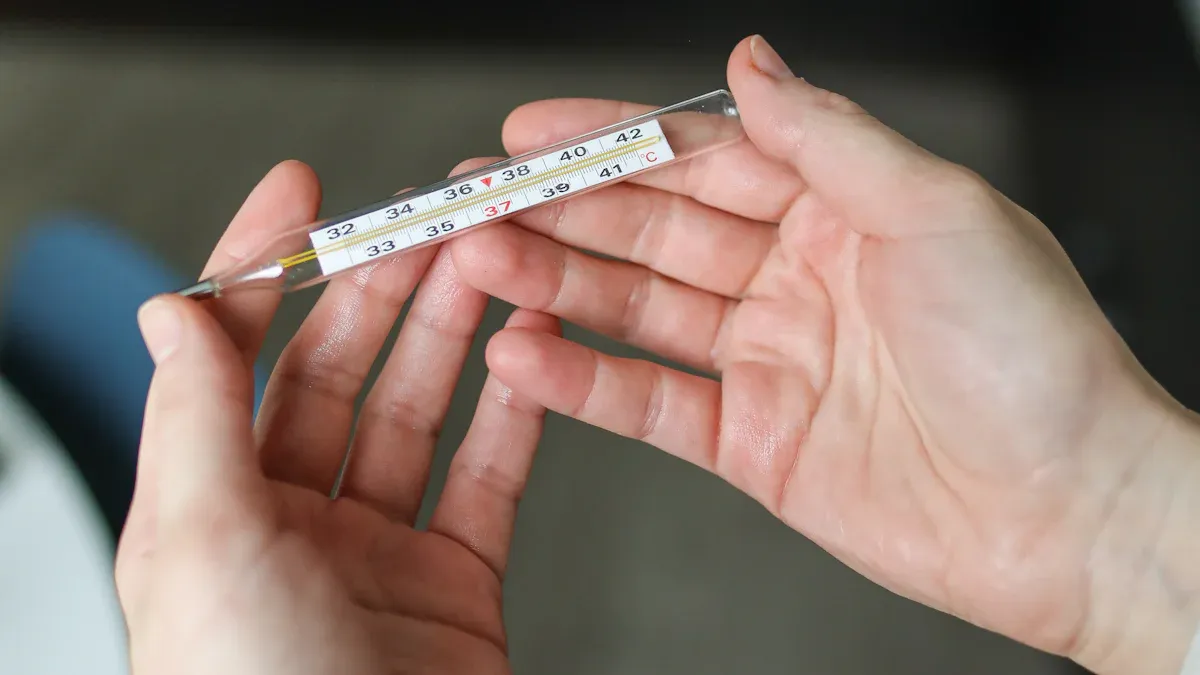5 Reasons Nitinol Tubing Is Perfect for Stents

When selecting materials for neurovascular stents, reliability is key. Neurovascular stent Nitinol tubing is special because of its great features. Its high purity makes it strong and less likely to break. This reduces risks from tiny flaws or gaps in the material. Studies on neurovascular stent Nitinol tubing show good results, especially for treating brain aneurysms with wide necks. Unlike weaker materials, Nitinol doesn’t crack, even after many uses. These traits make neurovascular stent Nitinol tubing a safe choice for saving lives.
Key Takeaways
Nitinol tubing remembers its shape, helping stents fit well in blood vessels. This makes placement easier during surgeries.
Nitinol tubing is super stretchy, so stents can bend and adjust to blood flow without breaking. This makes them work better in tricky blood vessel systems.
Nitinol is safe for the body, lowering the chance of swelling or rejection. This makes it a good choice for long-term medical use.
Nitinol tubing is tough and doesn’t wear out easily. This keeps stents strong even with constant movement, making them dependable.
Nitinol tubing doesn’t rust, so stents stay strong over time. This stops bad reactions in the blood, keeping patients safe.
Shape Memory and Superelasticity in Neurovascular Stent Nitinol Tubing

How shape memory helps stents fit perfectly
Shape memory is a special feature of nitinol tubing. It lets the stent return to its original shape after bending. This ensures the stent fits correctly during medical procedures. When squeezed for insertion, it keeps its programmed shape. Once released, it expands properly inside the blood vessel. This reduces mistakes and helps the stent match the artery's shape.
Studies show why shape memory is important:
Nitinol tubing adjusts to artery walls, lowering stress and improving strength.
Tests and computer models show nitinol stents hold their shape under pressure.
Shape memory keeps the stent strong, even after being bent during placement.
Research explains how shape memory works in medical tools:
Evidence | Key Findings |
|---|---|
Shape-memory materials return to their shape inside the body. | Smaller tools and precise placement at body temperature. |
Factors like temperature and material density affect shape recovery. | Stronger materials improve shape return and force control. |
This feature makes nitinol great for stents, offering safe and reliable use.
How superelasticity helps stents handle blood flow
Superelasticity is another amazing trait of nitinol tubing. It lets the stent bend and return to shape without breaking. This flexibility is key for handling blood vessels that expand and contract. Blood flow and pressure constantly change, and the stent adapts to these movements.
Research shows how superelasticity improves stents:
Nitinol stents bend and adjust to moving arteries.
Models show how stents expand and fit into blood vessels.
Superelasticity prevents damage by moving smoothly with artery walls.
This flexibility keeps the stent working in tough conditions, like narrow or tricky arteries. By being both strong and flexible, nitinol stents are safer and more effective for patients.
Biocompatibility of Nitinol Tubing and Wire for Safe Use
Why biocompatibility matters for neurovascular stents
For stents, biocompatibility is very important. The material must work well with the body to avoid problems. Nitinol tubing and wire are great for this, making them a top choice in medicine. If stents lack biocompatibility, they can cause swelling, blood clots, or even fail. This shows why using safe materials is so crucial.
Studies show how biocompatibility helps stents succeed. For example, research on coatings proves that better stent surfaces reduce bad reactions. Improved cell growth on stents also shows how biocompatibility aids healing and long-term use.
Evidence Description | Findings |
|---|---|
Study on PLLA stent materials | Shows better interfaces lower bad reactions for long-term success. |
Albumin coatings | Improves cell health and lowers swelling, key for implants. |
EC behavior on stent surfaces | Better cell growth on improved surfaces means safer stents. |
Nitinol tubing and wire meet these needs, making them safer for patients.
How Nitinol lowers risks of swelling and rejection
Nitinol's special traits help stop swelling and rejection. Its biocompatibility makes the body accept it without strong immune reactions. Unlike older materials, nitinol resists rusting, so harmful metals don’t enter the blood. This lowers the risk of poisoning and swelling.
Studies back nitinol’s safety in medical tools:
Nitinol tubing is safer than older materials.
Its rust resistance stops problems from metal breaking down.
Nitinol devices stay strong under pressure, reducing failure risks.
Data also shows nitinol lowers swelling. For example, tests measuring white blood cells found less swelling with nitinol stents (p < 0.05). This proves nitinol tubing and wire are safer and more reliable for stents.
Analysis Type | Description |
|---|---|
Inflammation Score | Measures white blood cells in different stent areas. |
Statistical Methods | ANOVA and t-test compare groups; Kruskal–Wallis test checks swelling. |
Significance Level | p < 0.05 means results are meaningful. |
Choosing nitinol gives you a material that reduces risks and improves safety.
Strong Nitinol Tubing for Long-Lasting Stents
Why stents need to resist wear and tear
Stents must handle constant stress from blood flow. This stress comes from the blood vessels expanding and contracting all the time. Weak materials can break down over time. Nitinol tubing is strong and resists this wear, making it perfect for stents.
Nitinol has special traits that help it last longer:
Tests show nitinol can handle repeated stretching and relaxing.
Purity, temperature, and structure affect how long nitinol lasts.
The Bend Free Recovery test proves nitinol keeps its shape after bending.
These features make nitinol stents safe and useful for a long time.
How Nitinol handles constant movement
Nitinol can bend and return to its shape without breaking. This is because of its superelasticity and smart design. Stents made of nitinol adjust to moving blood vessels while staying strong.
Studies show nitinol works well under pressure:
Computer tests explain how nitinol handles stress from movement.
Fatigue tests prove nitinol can survive repeated stretching.
Superelasticity lets nitinol recover from bending, which is key for stents.
Data shows why nitinol is durable:
Feature | What It Means |
|---|---|
Expansion and Contraction | Stents stretch and shrink with blood flow, testing their strength. |
Stent Size vs. Artery Size | Bigger stents compared to arteries affect how they handle stress. |
Stretching vs. Lifespan | More stretching shortens lifespan, so strong materials are needed. |
Dependence on Strain | Nitinol is less affected by strain than other materials. |
With its ability to bend and resist wear, nitinol tubing makes stents reliable and long-lasting. It’s a great choice for helping patients stay healthy.
Flexibility of Nitinol for Complex Neurovascular Pathways

Adjusting to tricky and delicate body structures
The neurovascular system is full of narrow, winding blood vessels. These pathways need tools that can bend and fit well. Nitinol is perfect for stents because it can change shape easily. Its shape memory lets it bend and return to its original form. This helps the stent fit tightly without losing strength.
Nitinol’s flexibility lowers the chance of hurting tissues during surgery. It adjusts to soft nerve structures, making problems less likely. Tests and studies show how nitinol works in tough situations:
Nitinol stents bend a lot but don’t break, keeping patients safe.
Superelasticity helps nitinol return to shape after bending hard.
Its ability to adjust reduces damage to nearby tissues, helping recovery.
These features make nitinol a trusted choice for stents in tricky neurovascular areas.
Staying strong in tough conditions
Blood vessels in the brain move and stretch all the time. Stents must handle this movement without failing. Nitinol tubing is strong and flexible, so it works well under stress. It keeps its shape and lasts a long time, even in hard conditions.
Tests show nitinol’s strength in tough neurovascular uses:
Feature | Result |
|---|---|
Shape Recovery | 5.62% |
Success Rate | 98% |
These results prove nitinol can handle the bloodstream’s constant motion. Its superelasticity stops stents from breaking or bending out of shape. This makes nitinol stents reliable for surgeries and helps patients heal better.
With its ability to bend, stay strong, and adapt, nitinol tubing is a great material for stents in neurovascular procedures.
Corrosion Resistance of Nitinol Tubing in Medical Applications
Why corrosion resistance matters for stent strength
Corrosion resistance helps stents stay strong for a long time. Bloodstream exposure can cause chemical reactions and stress on stents. Without corrosion resistance, stents may weaken, release harmful particles, or fail early. Nitinol tubing is tough and solves these problems well.
The surface finish affects how resistant nitinol is to corrosion. Smooth, electropolished surfaces resist corrosion better than untreated ones. This keeps stents strong even after long exposure to body fluids. Tests using ASTM F2129 standards show nitinol resists pitting corrosion, which damages stents in small areas. Immersion tests in special solutions prove nitinol lasts longer with better finishes and controlled exposure.
Evidence Description | Findings |
|---|---|
Surface Finish Importance | Electropolished surfaces resist corrosion better. |
Types of Corrosion | Pitting corrosion tested with ASTM F2129 standards. |
Immersion Time Effects | Longer immersion shows nitinol's durability. |
Breakdown Potential Assessment | Higher values mean stronger corrosion resistance. |
By resisting corrosion, nitinol tubing keeps stents safe and reliable for medical use.
How Nitinol works well in the bloodstream
Nitinol tubing performs well in the bloodstream because of its special traits. It releases very few metal ions, lowering risks of toxicity or allergies. Studies show nitinol implants don’t corrode or harm nearby tissues. This makes nitinol a trusted material for stents.
Animal tests show good results after 26 weeks of use. Nitinol stents helped normal bone growth without corrosion or swelling. Its biocompatibility helps it work smoothly with the body, reducing problems. Nitinol also handles constant movement and pressure changes in the bloodstream, proving its reliability.
Metal ion tests show tiny amounts of nickel and titanium, ensuring safety.
Studies confirm no allergic reactions or corrosion in nitinol implants.
Long-term tests show nitinol supports healing and works well with tissues.
These results show why nitinol tubing is great for stents. Its corrosion resistance and safety make it a key material for modern medical devices.
Nitinol tubing has many great benefits for stents. Its shape memory helps stents fit perfectly in the right spot. It is flexible, so it works well in narrow, twisty blood vessels. Nitinol is strong and handles constant movement without breaking. It is safe for the body, lowering risks during surgery and healing. The material resists rust, staying strong inside the bloodstream for a long time. These qualities make nitinol perfect for medical tools like stents. It keeps patients safer and helps them recover better. Nitinol ensures stents work well and save lives in important procedures.
FAQ
Why is nitinol good for stents?
Nitinol can return to its shape after bending or stretching. This helps stents fit correctly in blood vessels. It is flexible and strong, so it works well with the body’s movements.
Are nitinol stents approved by the FDA safe?
Yes, FDA-approved nitinol stents follow strict safety rules. They work well with the body and resist rust, lowering risks like swelling or rejection.
How does nitinol wire help make custom stents?
Nitinol wire lets stents be designed to fit each patient. Its ability to remember shapes helps stents match unique body structures for better results.
What are nitinol wires used for in medicine?
Nitinol wires are used in stents, guidewires, and other tools. They are flexible, strong, and can be placed precisely in tricky areas.
Why is it important to place stents correctly?
Placing stents correctly keeps them secure and avoids tissue damage. Nitinol stents expand properly in blood vessels, making them safer and more effective.

